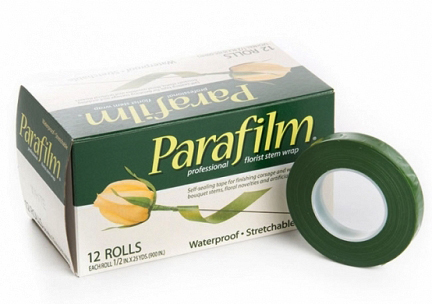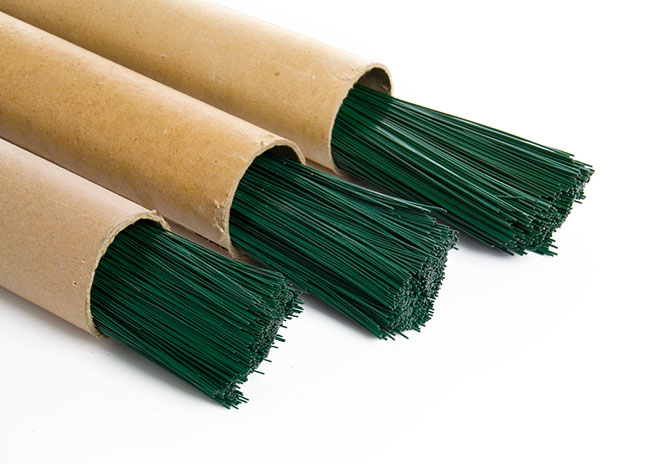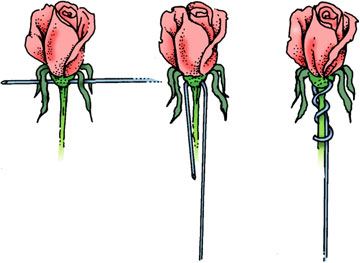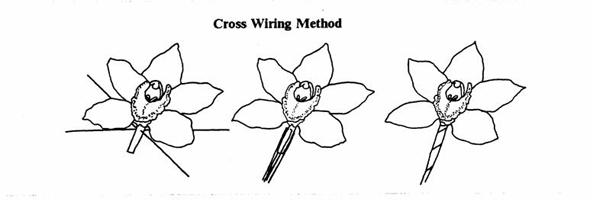
Flower Wiring Techniques: A Beginners Guide
Flower wiring may seem like a daunting task at first, but once you learn a few basic flower wiring techniques, you will soon discover a whole new and exciting world. Floral wire extends and strengthens natural stems, locks in moisture and allows for full manipulative control of components in floral arrangements. Just follow these basic steps.
Essential Items
- Florist Wire
- Floral Tape
- Florist Scissors
- Corsage Bracelet ( for Wrist Corsage)
- Pearl Head Pins
- Wire Cutters
- Tea towel, dishcloth or rag
Types of Projects Using Wiring Methods
- Corsage or Buttonhole
- Wedding Bouquet
- Floral Cake Topper
- Hair Flowers
- General Flower Bouquets
Search Koch’s online store to find more florist supplies
Why Floral Tape?
Floral tape or Parafilm is essential for wiring work. It covers wire and makes stems look neat whilst preventing moisture loss. A similar product to Parafilm is a paper based floral tape called Eco Paper which has the same properties but with a more natural look.
Wire Gauges
Floristry wires come in a variety of thickness levels – the higher the gauge number the finer the wire which must be considered carefully when arranging flowers. A wire too thick can tear and bruise, while one too thin may not offer enough support. Generally speaking, determining what gauge wire is appropriate is a matter of experience, and there are no hard rules as to what thickness is best.
To choose the right thickness, see the range to choose from. See methods below.
Condition Your Flowers
Before you start wiring and taping your flowers, you will first need to condition the flowers and foliage into usable pieces.
Lay a tea towel out on a bench, this will help to keep the surface dry. With your florist scissors, cut off a small length of stem from the bunch (about 1cm from the desired flower head) and trim off any leaves or thorns that you do not want. Make sure the stem you’re wiring is smooth to avoid bulkiness when taping. Continue conditioning additional pieces until you have enough to create your floral designs. Lay out all the components in neat rows, so everything is within reach. This will make the process quicker and simpler.
Basic Flower Wiring Techniques
1) Hairpin Method (Hook)
Flower wiring technique best for: delicate flowers such as orchids, hyacinth florets, delphinium florets.
Wire Gauge: between 24 -20
Image via
Steps
- Cut the stem of the flower about 1cm from the head.
- Bend a length of wire into a hairpin shape.
- Thread both ends through the centre of the flower, piercing either side of the calyx. Keep pulling the wire though so that the curve of the wire is just embedded.
- Stretch and wind the floral tape over the wire and flower stem tightly.
2) Stitch Method
Flower wiring technique best for: Leaves such as leather fern, camellia and ivy.
Wire Gauge: between 24 -20
Image via
Steps
- Cut the stem about 1cm from the leaf.
- With the underside of the leaf facing you, pierce and thread the wire through either side of the ‘midrib’.
- Bend both sides of the wire down to meet the stem.
- Stretch and wind the floral tape over the wire and leaf stem tightly.
3) Pierce Method
Flower wiring technique best for: Roses and carnations
Wire Gauge: between 22 -18
Image via
Steps
- Cut the stem about 1cm from the head
- Pierce the receptacle of the flower (flower base) with the wire and thread through so that one side is approximately 1/3 of the other.
- Bend both sides of the wire down to meet the stem (optional – wind shorter wire around stem for extra support, however this can look bulky).
- Stretch and wind the floral tape over the wire and leaf stem tightly.
4) Insertion Method
Flower wiring technique best for: Flowers with sturdy stems such as roses, peonies, gerberas and carnations. Used as a preventative measure to protect the head from drooping.
Wire Gauge: between 22 -18
Image via
Steps
- Pierce the receptacle of the flower (flower base) with the wire, vertically, just enough so that it is firmly lodged in.
- Wind the wire around the stem in a spiral.
- Stretch and wind the floral tape over the wire and stem tightly (optional).
5) Cross Wiring Method
Flower wiring technique best for: Flowers with a single stems (e.g. roses, carnations, gerberas) and heavier flowers (e.g. protea, banksia). Effective for replacing heavy or woody stems .
Wire Gauge: between 22 -16
Image via
Steps
- Cut the stem of the flower about 1cm from the head.
- Pierce the receptacle of the flower (flower base) with the wire and thread through so that each side of the wire is at equal lengths.
- Repeat Step 2 to make an “X” with the wires piercing the receptacle of the flower.
- Bend the sides of the wire down to meet the stem (optional – wind wires around the stem for extra support, again this may look bulky).
- Stretch and wind the floral tape over the wire and stem tightly.
Last tip: Be organised and have everything you need before starting. Take it one step at a time and you’ll have created something to be proud of with your newly learnt flower wiring techniques.
The post Flower Wiring Techniques: A Beginners Guide appeared first on Koch & Co Blog.









